A tulip-shaped skirt and a dress of a similar style are favorite items of a woman's wardrobe. About how to create a skirt and dress with your own hands, what kind of skirt to sew for the summer, how to choose a fabric, build a model using step-by-step master classes, below.
Modeling of the style
Tulip skirt - a model with a narrow waist, voluminous hips and a tapered shape at the bottom. At the moment, there is a style with pockets, midi length, with darts and drapery, with a tapered waist, with a bow, oblique and straight darts and with an oblique cut.
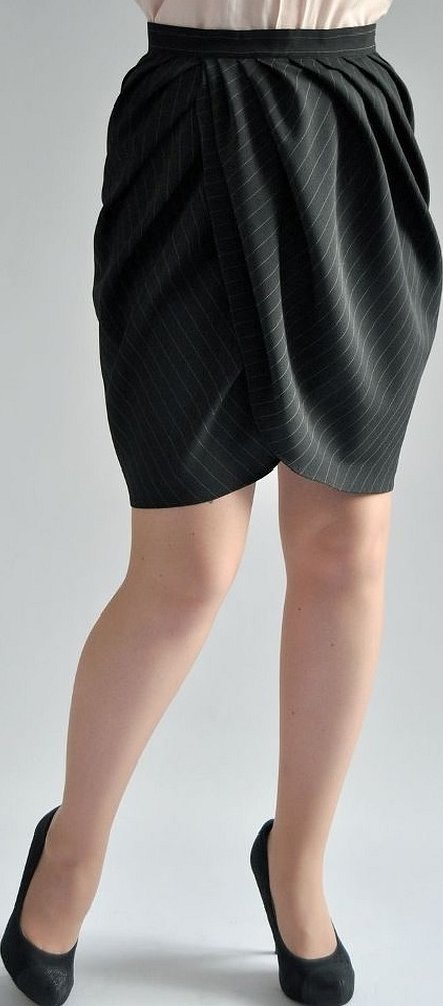
There is another interesting designer style of pattern for beginners - tulip skirt. One of such successful examples, which suits both thin and plump girls, is presented below.
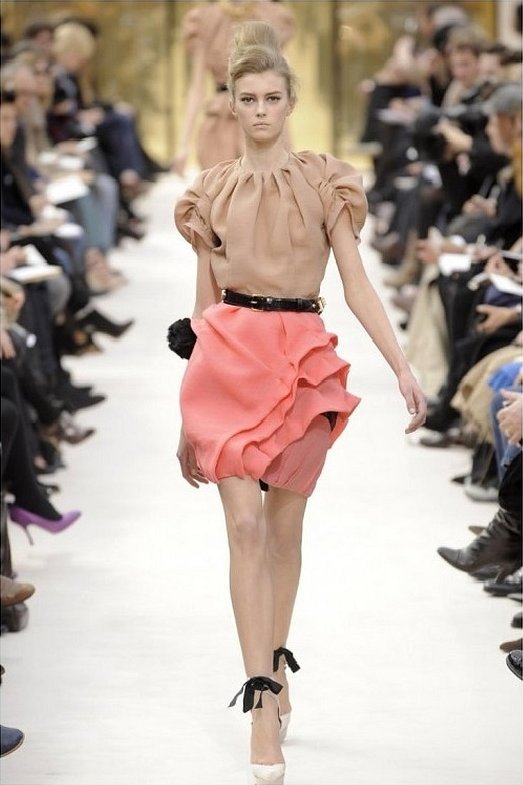
Choice of fabric
Tulip skirts are made of silk, satin, crepe and poplin. There are summer and spring models made of chiffon. The autumn version is made of thick satin. Linen, classic denim, gabardine and silk are often used to make things.

The winter version is made of corduroy, natural wool, brocade and tweed. Often the skirt is also sewn from velvet, suit fabric and leatherette. Rarely can you find models made of taffeta, eco-leather, jersey, coupon fabric and pleats.
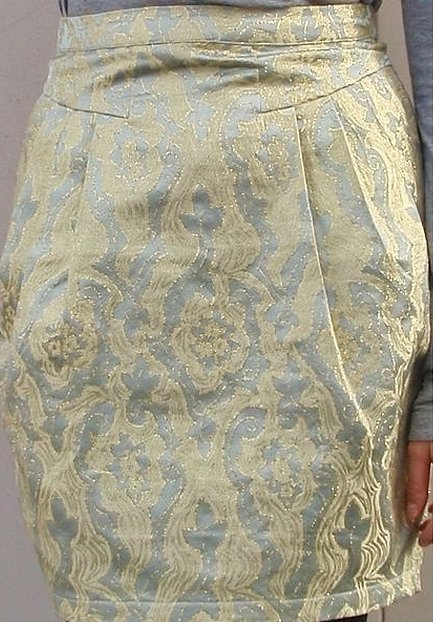
Tulip skirt and dress pattern
To make a pattern for a skirt or dress, you need to decide on the size. The classic option is midi. This is the length of the product just above or below the knees. A common winter model is long. It is complemented by a wrap and a front neckline. An unconventional option is a fitted mini, decorated with darts.
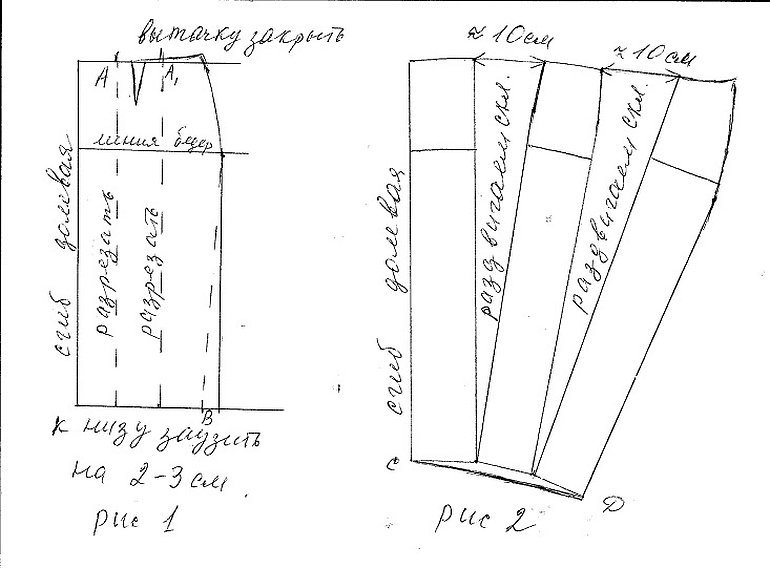
The pattern of a full-size button-down skirt with a protective hem is modeled on a basic base. It can be constructed based on your own measurements or a sample from the Internet.
Please note! To model the product, you need to lower the waistline by a few centimeters, repeating its profile. Close the darts to the yoke, design the upper and lower cuts using smooth lines. Make yokes patterns.
To model the panel, divide the size along the hip line into four parts, draw straight lines upwards through the division points. Increase the patterns by four centimeters to form the central fold. Narrow the panel at the bottom and move the lower point of the seam a few centimeters to the left side.
Cut the base, spread the edge by four centimeters along the cut and design the top using the pattern line. Similarly, make the base of the back panel. For this, you can study in detail the material on the topic "tulip dress and skirt - pattern in an hour".
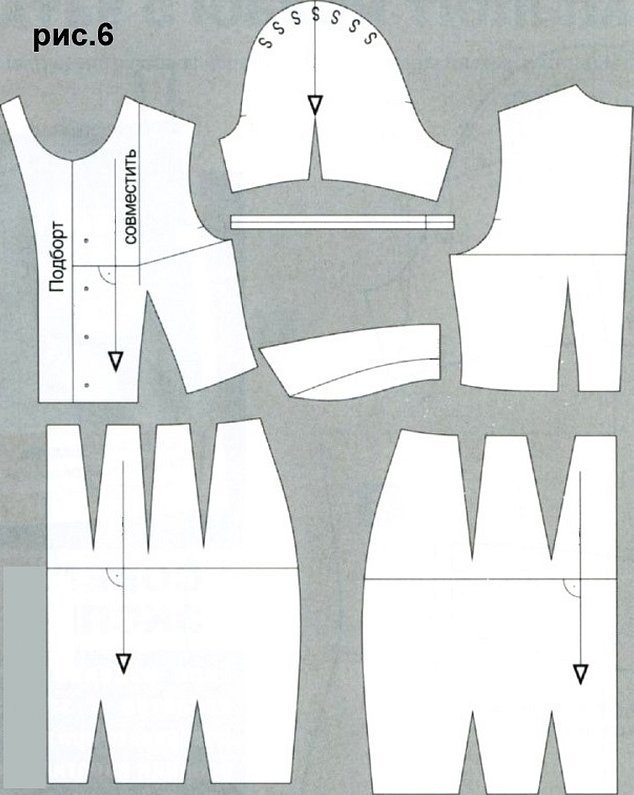
Preparing fabric for cutting and cutting
Before you start embroidering, you need to prepare the fabric for cutting. Wash and iron the fabric. Stitch the ends of the parts, burn them or process them with an overlock.
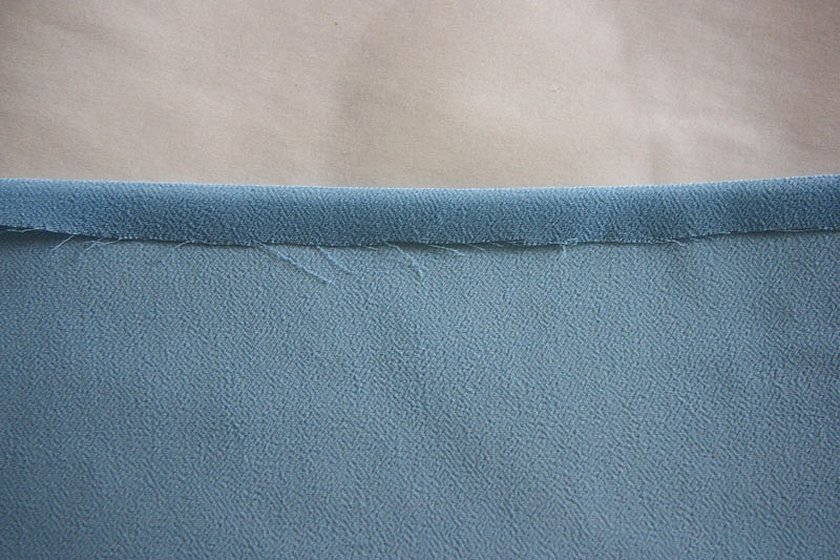
Next, prepare the front panel with a fold, two pieces of the back panel, two pieces with a fold of the front yoke and four pieces of the back yoke. When cutting out the blanks, be sure to make a seam allowance of one centimeter and three centimeters along the bottom edge.

DIY sewing
To make a model with a length of forty centimeters, you need to take a half-meter piece of fabric, a half-meter lining mesh, thin fabric for burlap, interlining with a width of 15 centimeters, a hidden zipper, threads with sewing accessories, an iron and a sewing machine.
Before cutting, decatize the fabric. Mark and cut out the pieces. Pin and baste the darts. Stitch them and iron them. Make folds on the front fabric, stitch along the upper edge and make pockets. Reinforce the front yoke with interlining. Do the same with the back yoke.
Place the yoke and fabric pieces together with the right sides facing each other, stitch at a distance of one centimeter. Turn up the yoke allowances, press. Stitch with a fixing stitch along the front side. Overlock or zigzag stitch the side seams with the middle back seam. Place the two parts of the back fabric together with the right sides facing each other, stitch up to the zipper and sew in the zipper.
Sew the side seams and press them apart. Finish the cut at the bottom with a facing. Sew the yoke pieces to the sewn pieces. Sew the side seams from the back to the zipper. Sew the lining to the fabric on the zipper. Cut out the corner allowance. Sew the allowances. Sew the seam at a distance of two millimeters from the edge. Make a stitch at the top and hem the lining with your own hands. Iron the skirt.
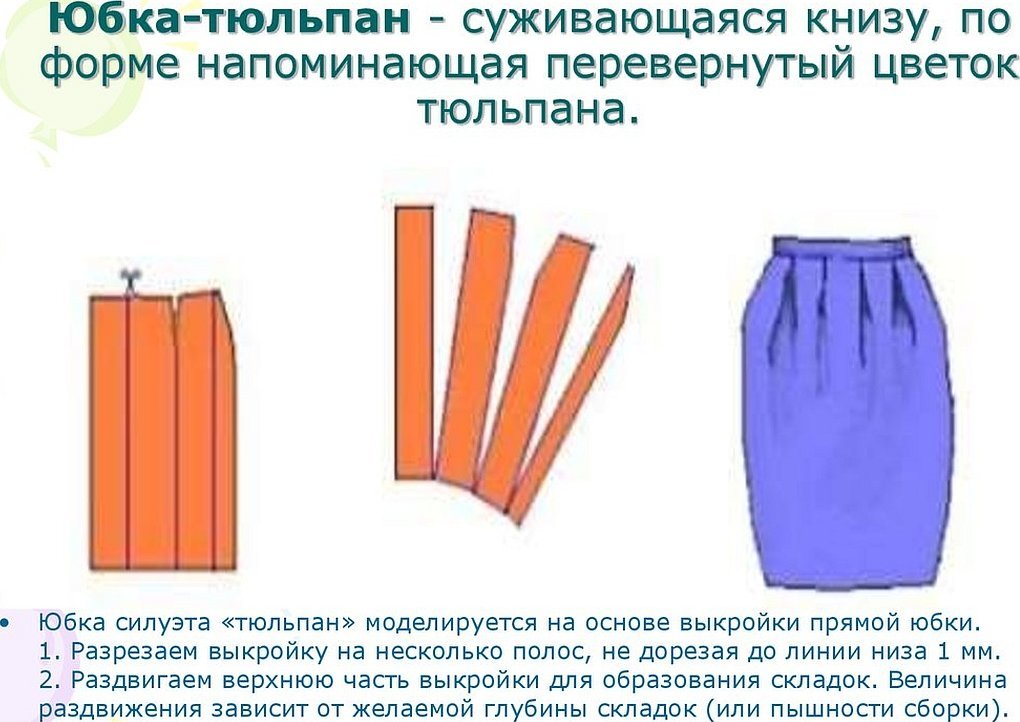
How to sew a tulip dress
The tulip dress is embroidered in two stages. First, the skirt is created according to the previous instructions, then the top. To make sewing the product easier, you can take an old T-shirt or sweater and cut it out. The resulting parts will be the basis for a new product. The craftsman will only have to sew the parts together and decorate. For example, you can create a bow, do embroidery or sew on a ready-made patch.

Construction of the sleeve
It is also easy to construct sleeves for a dress, using blanks from an old sweater or studying the material of the master class "petal sleeve - pattern at home". After modeling them, you will only need to sew them to the finished product from the inside. When the work is finished, decorate them.
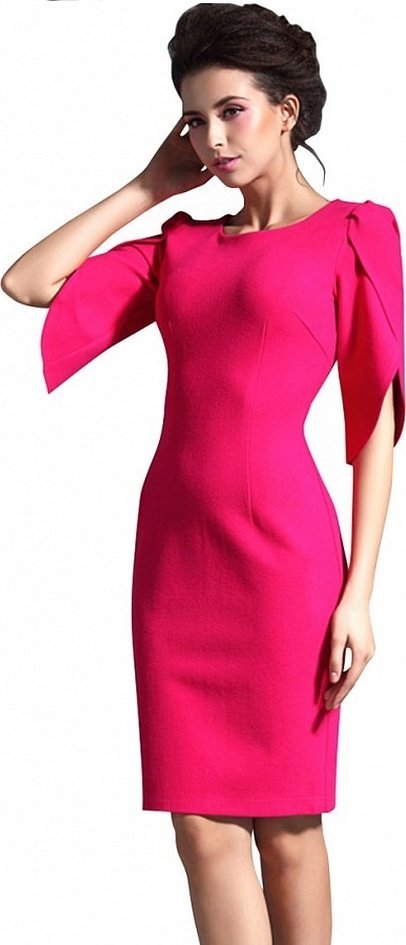
Who it suits and what to wear it with
A tulip skirt looks good on a teenage girl, being part of a school uniform. Such models or dresses have pockets and are often made of thick fabrics. This style looks great with jackets, blazers, vests, short tops.
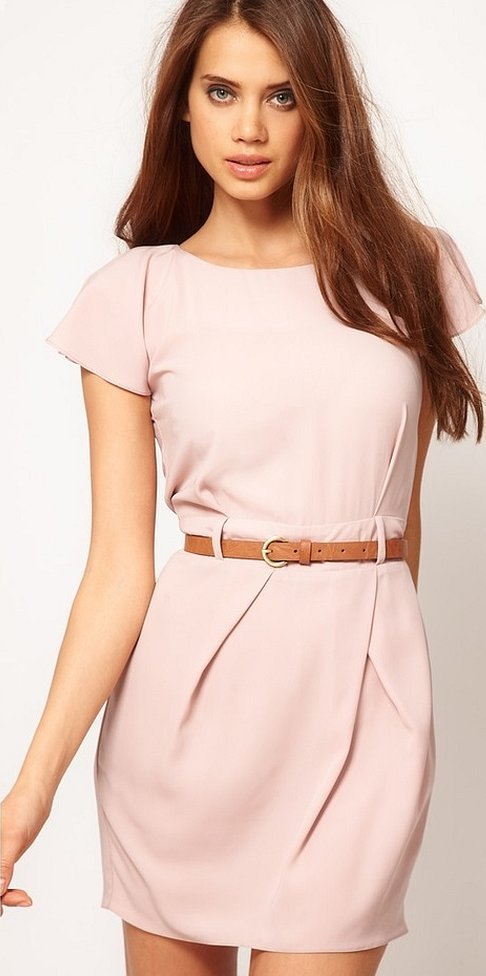
Skirts and dresses with a narrowed waist skillfully hide and drape full hips and upper legs. They hide excess weight and emphasize the waist. They look great with blouses, tank tops, T-shirts, shirts and turtleneck sweaters. They are perfectly complemented by a belt, bow, strap, machine or hand embroidery.
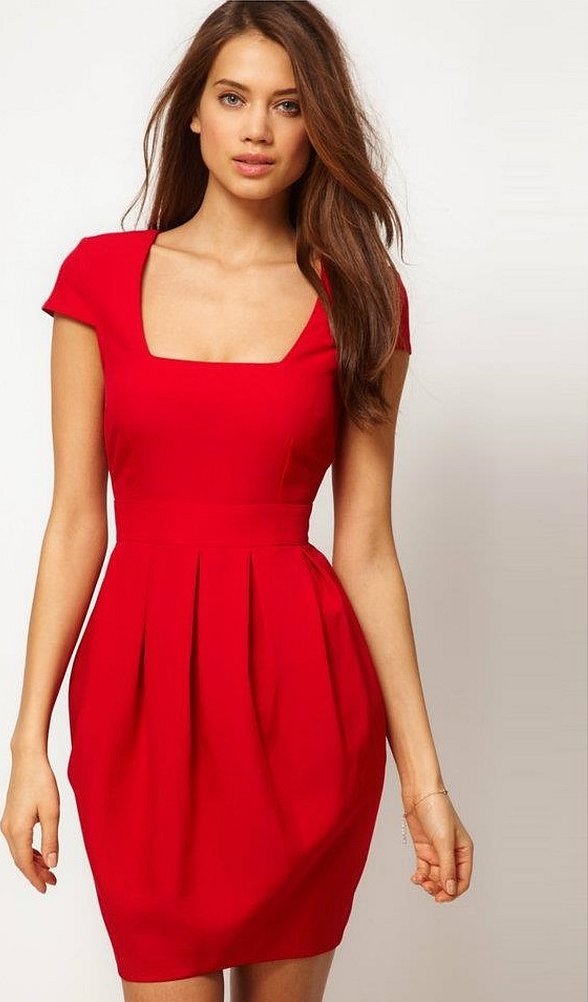
Making a tulip skirt, as well as constructing such an element as a barrel skirt, a pattern for which can easily be found on the Internet, is not difficult. The main thing is to adhere to the above recommendations for modeling the style, choosing fabric, constructing a pattern, preparing the fabric for cutting and sewing, sewing and wearing, try to carry out all stages of constructing the model carefully and use your imagination.




